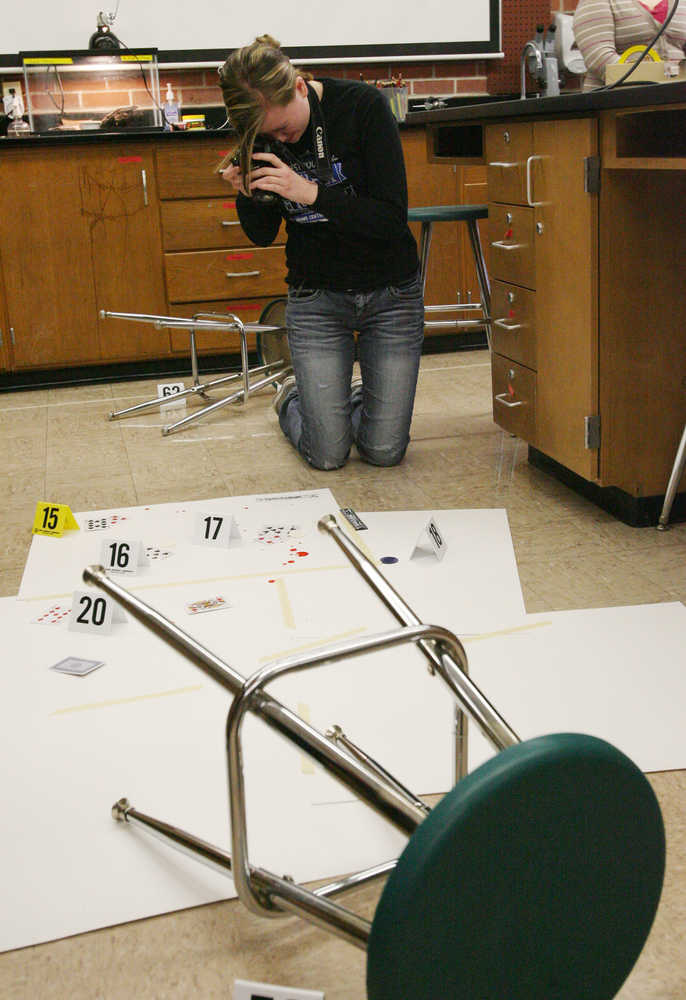HASTINGS, Neb. — Among the first group to arrive at the crime scene, senior Reilly Fahrenholz carefully photographed each piece of evidence.
It was the first day for students at Adams Central High School in Hastings to work toward solving a murder mystery during the forensic science course at the school.
“I think it’s fun,” Fahrenholz said.
She found out firsthand that evidence collection takes more work than a two-minute montage seen on TV crime shows. For each photograph, Fahrenholz placed a ruler next to the piece of evidence.
Meanwhile, senior Ali Stark compiled a list of evidence that was photographed at the crime scene. Senior Morghun Koepke started drawing a rough sketch of the room and where everything was found. Senior Derek Miller recorded video of the evidence and evidence collection.
“It’s a lot of work,” Stark told the Hastings Tribune.
For the first day, students in the class learned scant details about the crime.
Jack Xavier, 54, was found dead at a chemistry room lab at the fictitious Midwest Regional Community College. Xavier, a longtime chemistry professor, had a bullet hole in his head and a gun was found at the scene. Other evidence included blood splatter, playing cards, poker chips and beer bottles.
Jay Cecrle, instructor for the course, said the class shows practical applications for scientific principles students learned in other classes. So far this semester, the class has learned various skills that will be used for the crime scene investigation. They used trigonometry to calculate the angle of a shot from a gun. They conducted labs to analyze blood.
“It’s science instruction in a different way,” he said. “I’m hoping they can use scientific logic to solve real-world problems.”
Students from last year’s class created the mystery for this year’s crime scene. Over the next few weeks, the students will learn more information about the murder and the suspects involved. Once the evidence has been collected and suspects interviewed, the case will be sent to a mock trial before students in the business law class with the instructor serving as judge.
The forensic science course was added to the school’s curriculum in 2008. The class is an elective for juniors and seniors and can be used to fulfill a science requirement for college.
Cecrle has changed the program over time.
“This thing’s come quite a ways since we started it in 2008,” he said.

